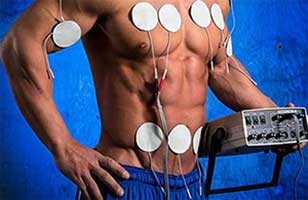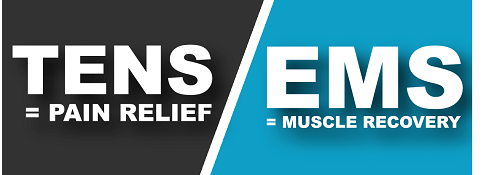The Difference Between TENS & EMS
What is the difference between TENS vs EMS?
One of the most commonly asked questions here at FlexTone is, “What is the difference between TENS and EMS?” Most people assume that TENS and EMS are similar enough to be interchangeable. FlexTone wants to make sure you know the differences in the two and the importance of when to use each of the modes with our equipment. Both TENS and EMS devices use a power supply, lead wires, and identical electrodes to supply the electrical impulses to the body. However, their purpose is quite different. Most machines offer both TENS and EMS programs to choose from. You can select not only the level of intensity but whether you need TENS or EMS at the time of treatment.
TENS
TENS is the acronym for (Transcutaneous Electrical Neural) or Nerve Stimulation. Small, low voltage, electrical currents are adjusted by the person using the machine to send stimulating pulses into nerve endings. These pulses assist with decreasing pain by blocking signals from reaching the brain.
“By stimulating A-beta fibers pain signals in the A-delta fibers are suppressed, preventing “nociceptive processing,” otherwise know as pain. This causes instant relief, which allows you to continue your day pain-free!” Department of Neurosurgery, Aachen University
The usefulness of TENS ranges from typical everyday pain relief to acute and chronic conditions. For example, a person with sciatic issues (a nerve problem) would use TENS. Use of the program can help with blocking pain, as well as stimulate circulation in the area to aid in the healing process. TENS will also aid in the stimulation of endorphin production (the body’s natural painkiller). This means you feel better, longer without the use of addictive or destructive medication.
“TENS therapy enhances the bodies natural ability to produce pain-fighting endorphins also know as ‘Beta-endorphins.’ These endorphins act to numb and relieve pain and to create a sense of euphoria.” Source
EMS
EMS, or (Electrical Muscle Stimulation), is the use of electrical pulses to generate a muscle contraction. EMS is typically used to enhance muscle strength, performance, and recovery. By contracting the muscle with EMS, you are able to achieve a stronger muscle contraction compared to a natural contraction. This effect produces an increase in the muscle’s ability performs as desired. EMS has been widely used by athletes and Olympians as early as the 1970’s and is gaining popularity due to its ability to push the body further. Please check out our Strenght page to find out more about EMS.
The simplest way to explain the differences is EMS mode goes directly to the muscle and causes a noticeable movement and contraction to the muscle, and the TENS signal bypasses the muscle and goes deep to the nerve to block pain. EMS is helpful with muscle recovery, muscle strengthening, or massaging of sore muscles.
A person who has pulled a muscle or has done an intense workout would use EMS. Massaging of the muscle group assists with the decrease in recovery time. EMS should be used for recovery, rehabilitation, strength, and toning. TENS should be used to treat pain. TENS blocks the pain signal, increases blood flow (quicker healing), and enhances endorphin production.
Our FDA Cleared units have the ability to deliver both TENS and EMS. This, in addition to our high-quality standards, allows our units to be more helpful and versatile compared to competitor’s units. Some treatments may require both TENS and EMS during the treatment process. With Knee replacement surgery the analgesic effects of TENS are desired to relieve pain while the effects of EMS are desired to regrow and strengthen the muscles. Flextone devices offer the best of both with our world-class electronic russian muscle stimulators.
If you need help deciding which device is for you, please Contact Us for a FREE TENS & EMS consultation.




